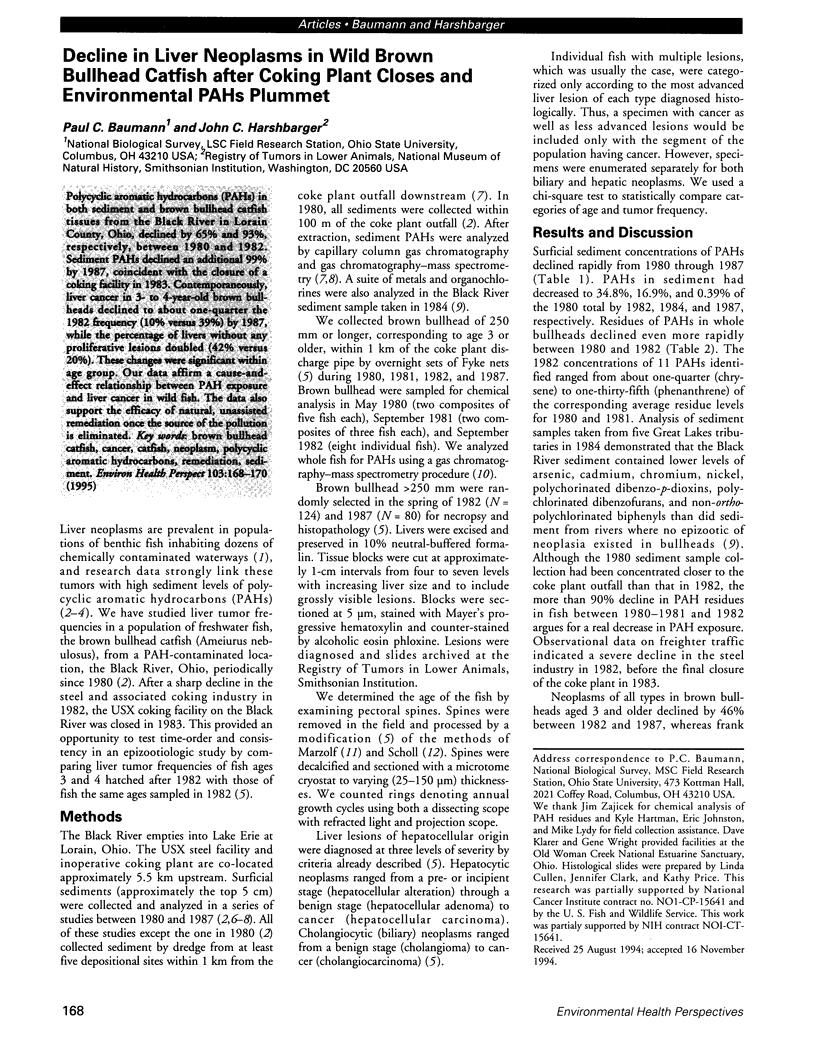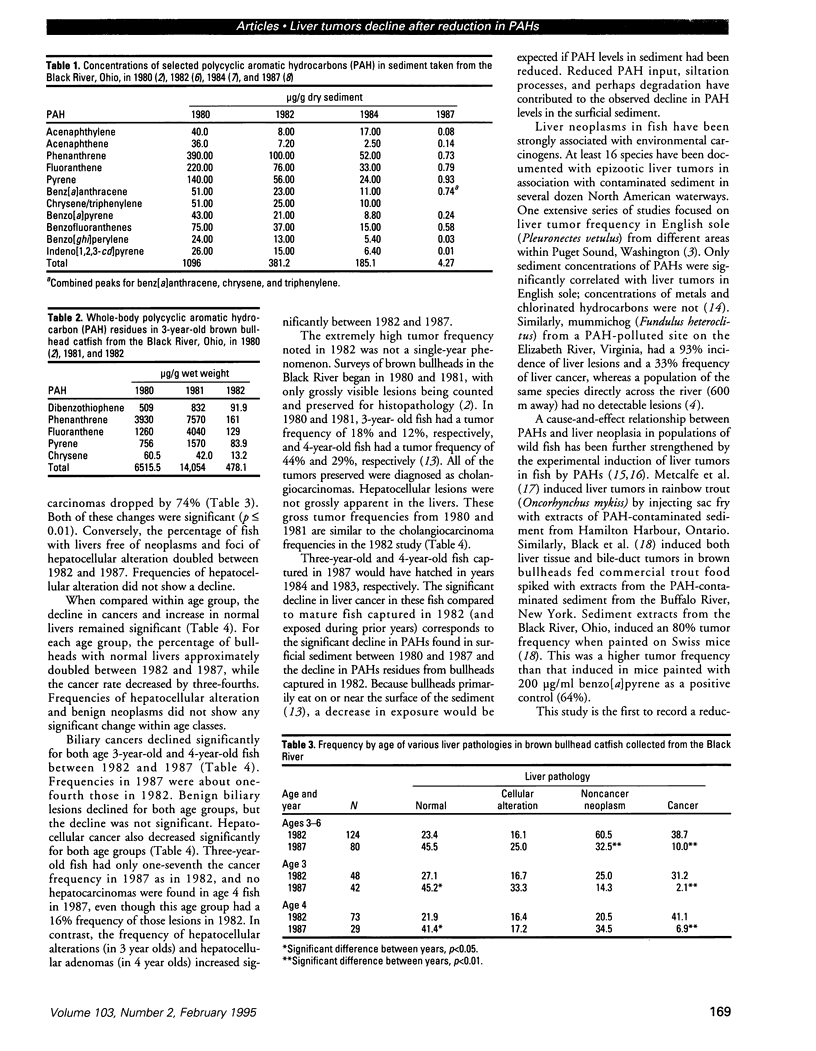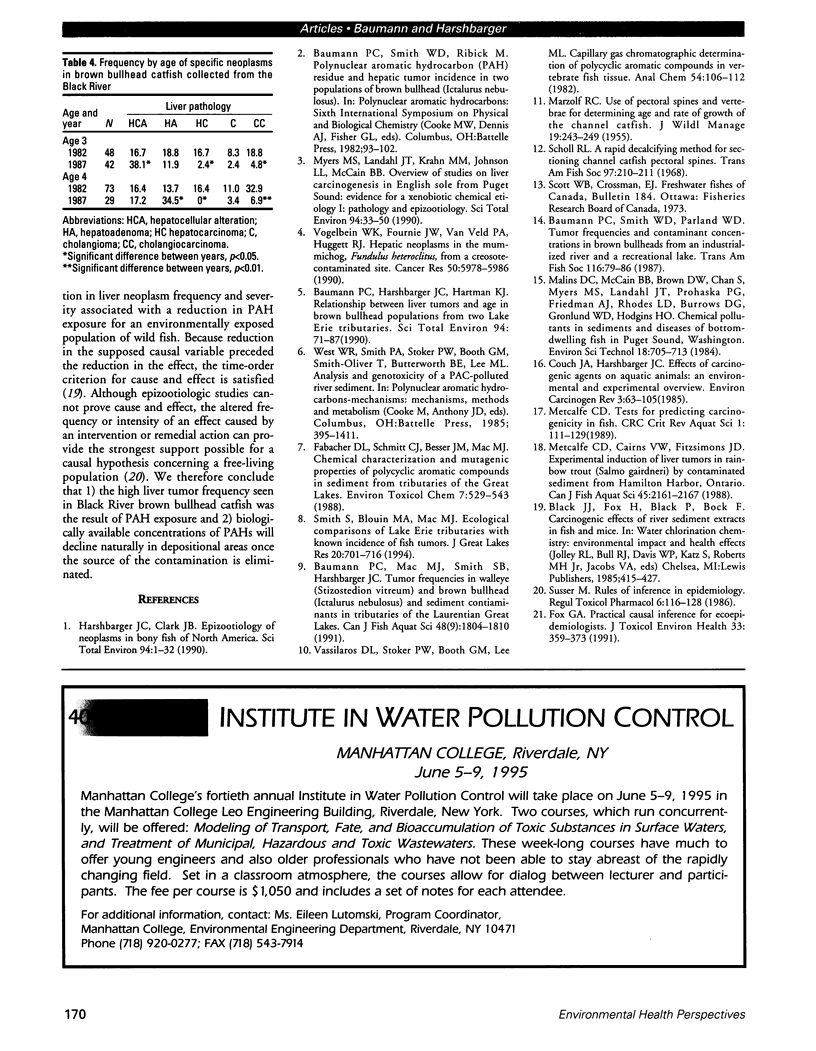Abstract
Polycyclic aromatic hydrocarbons (PAHs) in both sediment and brown bullhead catfish tissues from the Black River in Lorain County, Ohio, declined by 65% and 93%, respectively, between 1980 and 1982. Sediment PAHs declined an additional 99% by 1987, coincident with the closure of a coking facility in 1983. Contemporaneously, liver cancer in 3- to 4-year-old brown bullheads declined to about one-quarter the 1982 frequency (10% versus 39%) by 1987, while the percentage of livers without any proliferative lesions doubled (42% versus 20%). These changes were significant within age group. Our data affirm a cause-and-effect relationship between PAH exposure and liver cancer in wild fish. The data also support the efficacy of natural, unassisted remediation once the source of the pollution is eliminated.
Full text
PDF


Selected References
These references are in PubMed. This may not be the complete list of references from this article.
- Baumann P. C., Harshbarger J. C., Hartman K. J. Relationship between liver tumors and age in brown bullhead populations from two Lake Erie tributaries. Sci Total Environ. 1990 May 1;94(1-2):71–87. doi: 10.1016/0048-9697(90)90365-2. [DOI] [PubMed] [Google Scholar]
- Fox G. A. Practical causal inference for ecoepidemiologists. J Toxicol Environ Health. 1991 Aug;33(4):359–373. doi: 10.1080/15287399109531535. [DOI] [PubMed] [Google Scholar]
- Harshbarger J. C., Clark J. B. Epizootiology of neoplasms in bony fish of North America. Sci Total Environ. 1990 May 1;94(1-2):1–32. doi: 10.1016/0048-9697(90)90362-x. [DOI] [PubMed] [Google Scholar]
- Myers M. S., Landahl J. T., Krahn M. M., Johnson L. L., McCain B. B. Overview of studies on liver carcinogenesis in English sole from Puget Sound; evidence for a xenobiotic chemical etiology. I: Pathology and epizootiology. Sci Total Environ. 1990 May 1;94(1-2):33–50. doi: 10.1016/0048-9697(90)90363-y. [DOI] [PubMed] [Google Scholar]
- Susser M. Rules of inference in epidemiology. Regul Toxicol Pharmacol. 1986 Jun;6(2):116–128. doi: 10.1016/0273-2300(86)90029-2. [DOI] [PubMed] [Google Scholar]
- Vassilaros D. L., Stoker P. W., Booth G. M., Lee M. L. Capillary gas chromatographic determination of polycyclic aromatic compounds in vertebrate fish tissue. Anal Chem. 1982 Jan;54(1):106–112. doi: 10.1021/ac00238a031. [DOI] [PubMed] [Google Scholar]
- Vogelbein W. K., Fournie J. W., Van Veld P. A., Huggett R. J. Hepatic neoplasms in the mummichog Fundulus heteroclitus from a creosote-contaminated site. Cancer Res. 1990 Sep 15;50(18):5978–5986. [PubMed] [Google Scholar]


